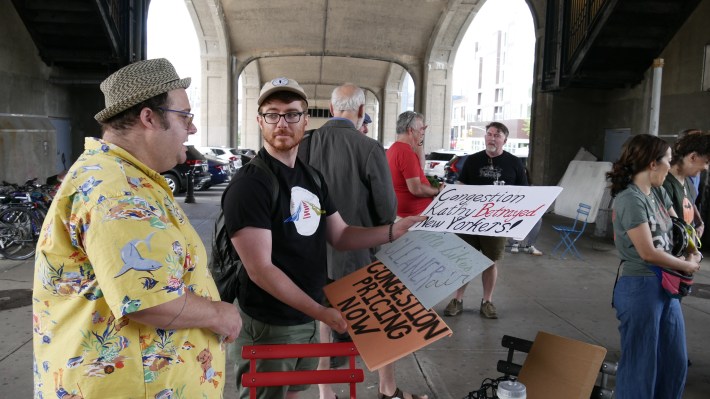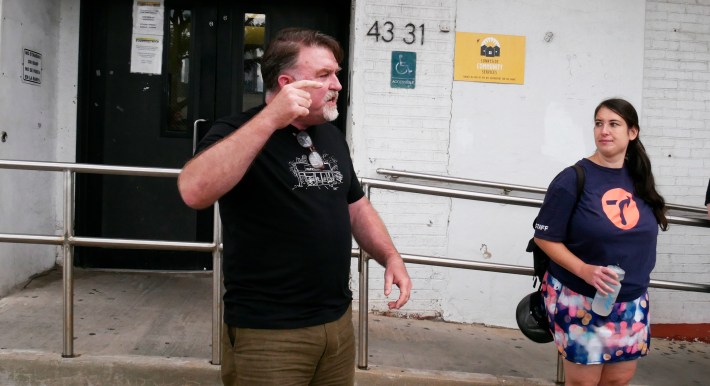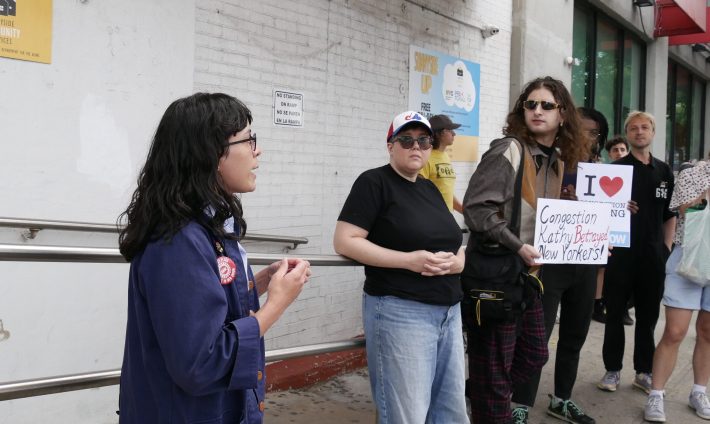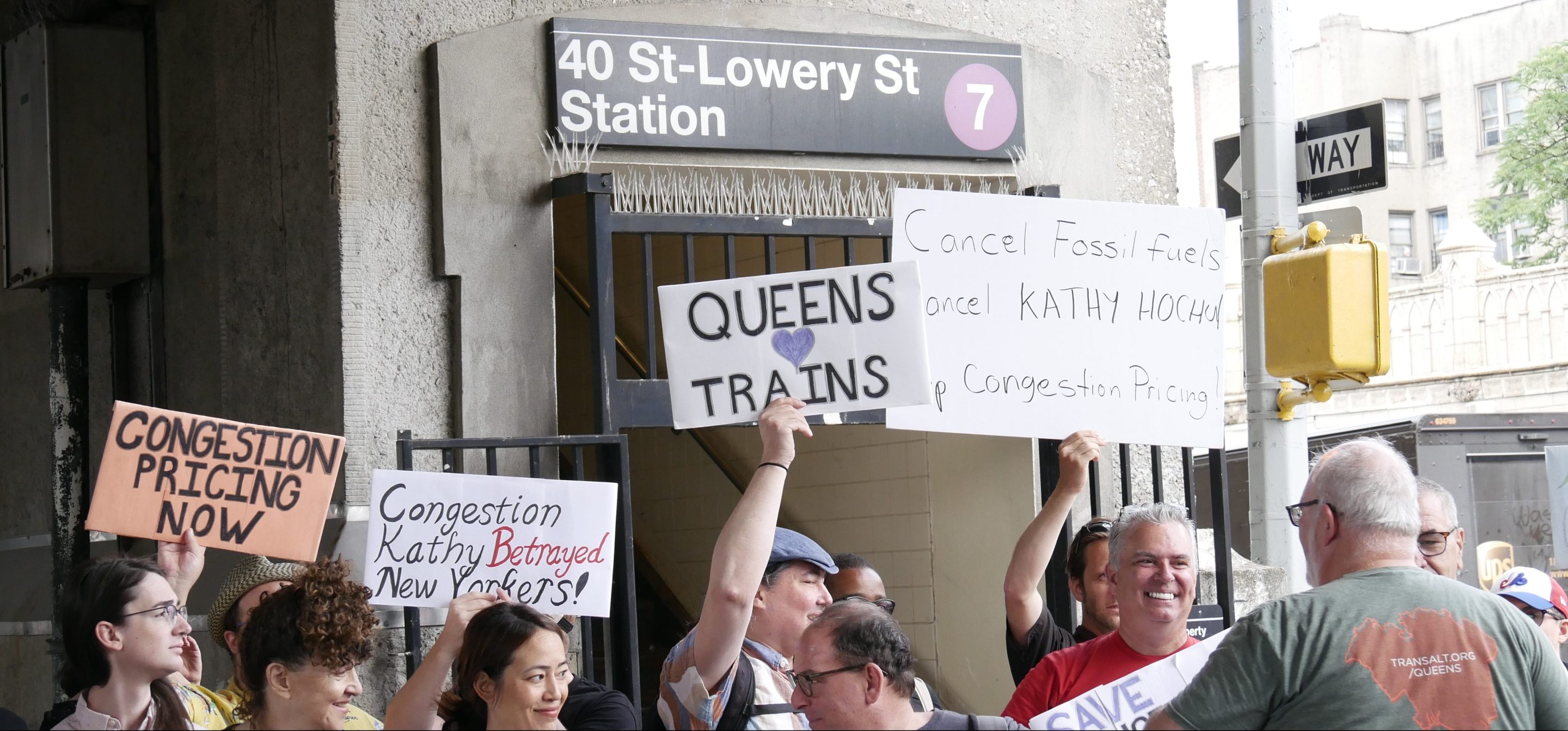Streetsblog is a non-profit newsroom devoted to covering the fight for livable cities. When we cover big, fast-moving stories like congestion pricing we kindly implore our readers to show some support to help fund our coverage. Click here if you can help. Thanks.
The editors
It’s not highway robbery, it’s subway robbery.
Three dozen Queens residents gathered under the 7 train to protest Gov. Hochul's last-minute "pause" on congestion pricing, calling out the governor's flip-flop as a hypocritical attack on New Yorkers who rely on public transit.
“I am pissed off. This is a mistake. She can't ignore the needs of New York’s eight million transit riders,” said Jaqi Cohen of Tri-State Transportation Campaign.
On Monday, however, MTA CEO Janno Lieber made it clear that those very riders — who, Census figures show, are poorer than the car-driving neighbors whose interests Hochul defended, will be the ones who suffer from the delay or death of congestion pricing.

Protesters in Queens scoffed at Hochul’s claims that congestion pricing would hurt working-class New Yorkers and businesses. One restaurant owner said that of 40 employees at his Queens establishment, only two even own cars.
“You want to know how my employees get to work? They walk, they bike, they take the bus,” said Michael Fuquay, who owns The Queensboro in Jackson Heights. “Real New Yorkers support institutions in their neighborhoods, and 99 percent of my customers walk to my restaurant. [Hochul] is screwing over regular New Yorkers.”

The Queens protesters were frustrated that the fight for congestion pricing, in which activists had been involved for 17 years, could be thrown away because of a last-minute political maneuver. State Assembly candidate Claire Valdez was angry about the uncertain future of the MTA's capital projects.
“It’s a slap in the face to millions who use public transit. We had planned for capital improvements so we could actually get where we needed to go on time,” said Valdez who is running as a Democratic Socialist and is endorsed by Rep. Alexandria Ocasio-Cortez. "Whatever stop-gap measures she has proposed will not be sufficient."

In February, the MTA announced that 17 stations across the five boroughs would be getting accessibility upgrades as part of the 2020-2024 capital plan, which relied heavily on expected revenue from congestion pricing. Two 7 train stations, 46 St-Bliss St, and 33 St-Rawson, were set to get long-awaited elevators. But, as Lieber said on Monday, without congestion pricing the MTA will have to shrink the capital plan, putting upgrades and even some state-of-good-repair work on the chopping block.
“We know projects like this hang in the balance without congestion pricing,” said Laura Shepard of Transportation Alternatives, who organized the rally.
The World's Borough has more drivers than the city as a whole. Almost 65 percent of Queens households have at least one car available, compared to around 45 percent New York City. Additionally, 38 percent of Queens residents use a car to commute to work, compared to 26 percent citywide, according to Census data.
But, still, the vast majority of Queens residents get to work on transit.
On Wednesday, there will be another protest, this time outside Gov. Hochul's New York office at 633 Third Avenue, at 5:30 p.m.






